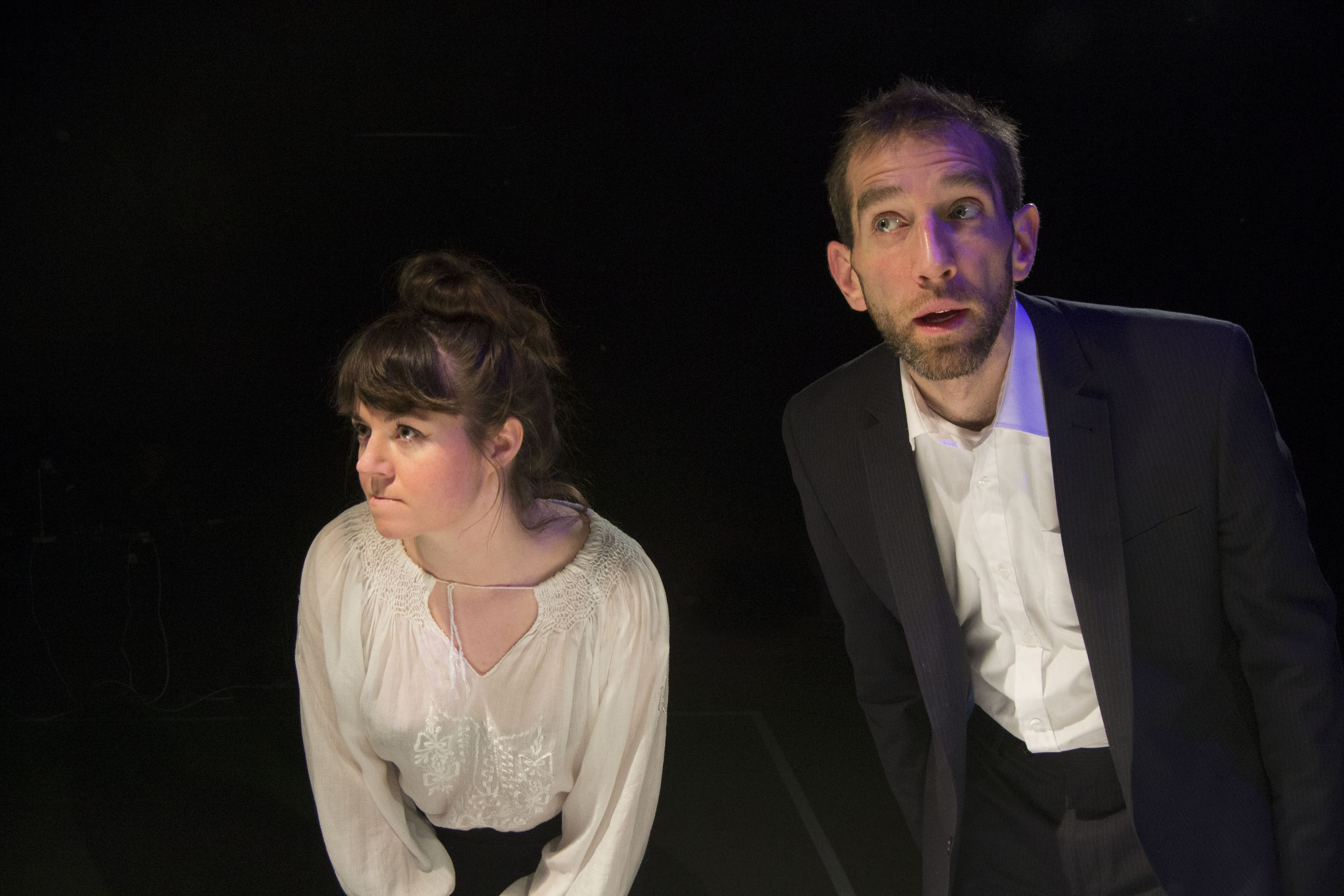by David Spencer
playwright & creative writing tutor
The Helmer Project, November 2015
A slate grey sky over De Beauvoir Road, the air misting from our breath, it seemed a Scandinavian November had descended on London’s Rose Lipman Building. In my Berlin days I’ve been to enough cellars, bunkers, converted factories to know instantly Foreign Affairs’ double bill; Ibsen’s A Doll’s House, 1878 and Jakob Weis’ Helmer Hardcore – A Doll’s House 2, 2007; was going to be either a quagmire of good intentions, or something very special. If the atmospheric mirrored cellar was a guideline, with its old vaulted doors hinting at a bank or strong room – genius in a play that is also about banking – then this was going to be special day. From almost the first stroke, in the case of A Doll’s House, a simple projected childlike drawing of a house, that specialness confirmed itself.
França’s direction drew universally strong performances from a mature and skilled ensemble – none to be singled out as all were a pleasure to watch. This is clearly that rare thing in UK fringe, a true ensemble rather an en suite cast.
França’s direction drew universally strong performances from a mature and skilled ensemble – none to be singled out as all were a pleasure to watch. This is clearly that rare thing in UK fringe, a true ensemble rather an en suite cast. This, in turn, demands they play the parts, not that they are simply cast to be them. The balance of mimetic realism and the courage to play status, not often seen on UK stages, was often spellbinding. It was as if in that cellared darkness a network of lasers told the audience exactly who had charge of whom. Of course A Doll’s House is a play about female emancipation and liberation, this alone makes the piece still relevant. However what’s often missed is that feminism is largely anti-patriarchal struggle; França, in this crisp new translation, reveals how the men collaborated, be it at their status, whilst the women sabotaged each other or saw their only route to power as male chattel. Ibsen’s often quoted: “a woman cannot be herself in modern society, since it is an exclusively male society…”
In this successful modern rendering of Ibsen’s A Doll’s House the choice of costume, prop and set, that relies on a projected opening, must be well organised: Too modern and the language appears too old, too old and the play appears very old. The design here was excellent; contemporary but timeless, a palette of blue, purple and white which again allowed us to see who might be connected to whom, without gimmick or exaggeration. Every detail attended to, the snow white suitcase echoed in the Christmas tree and the tree’s form echoed in the clear presence of the stacking toys; this is not a childless couple. Thus the final action of Nora’s agency, the slamming of the door, seemed pathetic, in the best of senses, almost sinister and heightened in the sense that we realise, Nora, unequipped, is out of the frying-pan into the fire, her children abandoned in order to find herself.
The design here was excellent; contemporary but timeless, a palette of blue, purple and white which again allowed us to see who might be connected to whom, without gimmick or exaggeration. Every detail attended to, the snow white suitcase echoed in the Christmas tree and the tree’s form echoed in the clear presence of the stacking toys; this is not a childless couple.
Jakob Weis’ Helmer Hardcore, 2007, is a deliciously uncomfortable, almost psychedelic, sadistic tearing apart of the modern male. Seen here for the first time on the UK stage, in a translation by Paul Russell Garrett that was as crisp and as fresh and theatrically aware as his Doll’s house; the play, set “now”, seems to pose the question what happens to Torvald? Now that Nora has abandoned him, how will his ego and narcissism survive this? Trine Garrett directs, again that genius serendipity of the bank vault is echoed, in that Ms Garrett played Nora and so we have Nora’s unseen hand in charge; it’s a wry piece of meta-critic whether intended or not (and I rather think that with Foreign Affairs, very little happens by accident.) In defence of the latter, the set, a bathroom, with its centre piece of a steel bath, is a sly reference to the location of Ibsen’s lost bath. However, this is not an installation; it is a play, and a damned good one. It takes swagger to write Ibsen part two and Weis pulls it off. Whilst the Borgenesque new Europe of Chinese Investors and Ukrainian maids plays out in the background, complete with Ms Linde’s wonderful “wag,” come up the ladder shagger! This whole “endzeit” party in Helmer’s bathroom suggests things are not quite right in the house of Denmark.
Again the cast is universally excellent and in a piece that squeezed out the most macabre of laughs, this grotesque, painful as it was, was not a moment too long; perhaps the only cast mention should go to the wonderful use of an electric car and a doll to indicate the children (god forbid a real child goes anywhere near this piece.) This is a play about just how utterly useless men are after a break up – in the UK 50% of men never see their kids, of the 50% that do, only 20% remain in adequate contact, it seems the Scandinavian’s might not be much better. Ah if only the Doctor had been a true friend and got Helmer back on the wagon when the fun went out of self-pity?
Trine Garrett directs, again that genius serendipity of the bank vault is echoed, in that Ms Garrett played Nora and so we have Nora’s unseen hand in charge; it’s a wry piece of meta-critic whether intended or not (and I rather think that with Foreign Affairs, very little happens by accident.)
What will we see next from Foreign Affairs? With an outfit as strong as this, as professional as this, as fully realised this, one hopes funding will come. They are a real talent and a great window on the world for the UK theatre.


